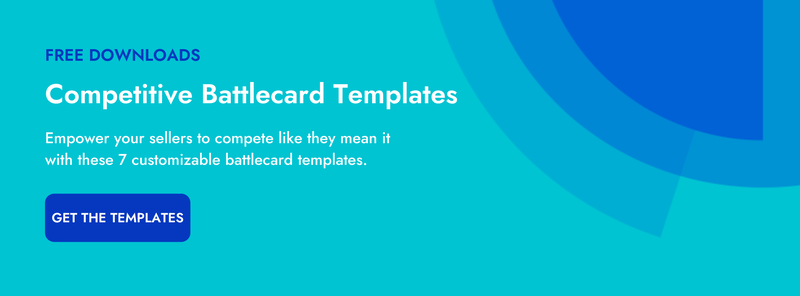An account executive on your sales team, Jen, is chatting with a prospect. The conversation is going well. The prospect doesn’t seem to be evaluating any other vendors.
And then they say this: “Talk to me about your SMS marketing tool.”
Your product doesn’t include such a tool—and for good reason. Your product managers have done their research. There’s no real customer need or demand for it.
Nevertheless, one of your competitors launched a flashy SMS marketing tool six months ago, and ever since then, they’ve been using it to put Jen and her peers in a defensive position. They tell prospects to bring this topic up in hopes that your sellers will get flustered, thus casting doubt on the quality of your product.
Apparently, this is a competitive opportunity after all.
So, how should Jen respond to the prospect’s request? Should she explain why your product doesn’t have the thing they’re looking for? Should she try to change the way the prospect thinks?
Nope. She should calmly respond with a question: “Why do you need an SMS marketing tool?”
The goal is to help the prospect help themselves—to gently nudge them towards the realization that they do not, in fact, need an SMS marketing tool for what they’re trying to achieve. This realization alone will not eliminate the competitor from the evaluation, but at the very least, it will keep them from gaining the upper hand and make it clear that Jen has the prospect’s best interests at heart.
Chris Pope, a former member of the Crayon sales team who is now our Senior Director of Strategy, added his two cents: “When it comes to objections and landmines, your sellers need to get to the root of your buyers’ problems. If a buyer is mesmerized by flashy features that don't solve their problems, it's the seller’s job to direct them back to the reasons they’re speaking in the first place. That’s the power of asking why: It steers the conversation back in your favor in a non-salesy way.”
Obviously, the primary benefit of this tactic is that it will help your sellers win more competitive deals. For those of you with access to a call recording tool like Gong, the secondary benefit is that it will help you, as a product marketer, better understand your customers (ICYMI: Crayon now has a Gong integration!)
See, if you can get your sellers to ask “Why?” more often, then you’ll soon have a library of invaluable call snippets—snippets in which your customers really get to the heart of the pain points they’re experiencing. With this data, you’ll be better equipped to position and promote your products, your product managers will be better equipped to innovate, your content marketers will be better equipped to attract and engage site visitors—and the list goes on.
For more best practices like this, check out The Ultimate Battlecard Breakdown, a multimedia event featuring experts from Gong, Hootsuite, and Salsify.



